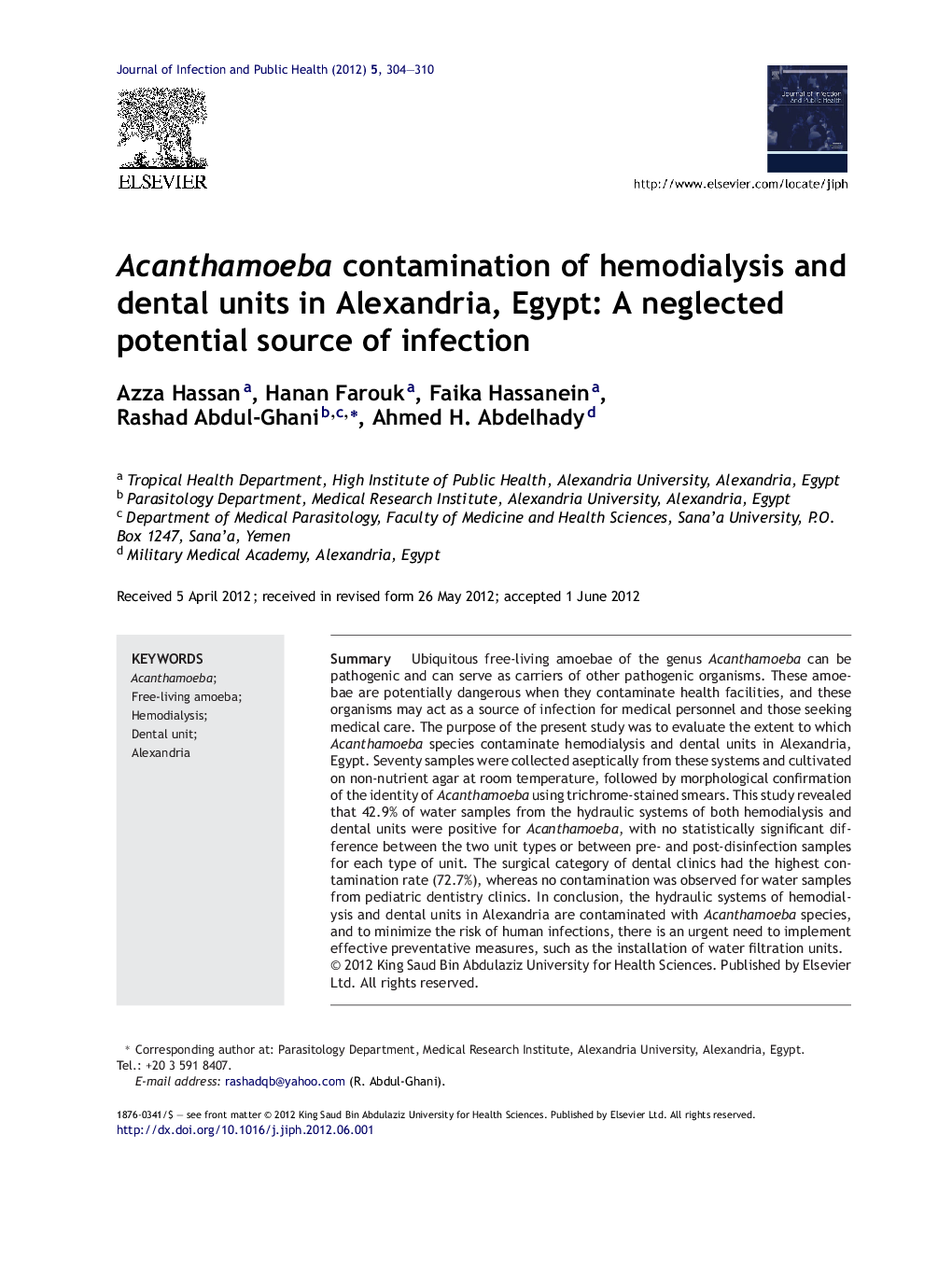| Article ID | Journal | Published Year | Pages | File Type |
|---|---|---|---|---|
| 3406113 | Journal of Infection and Public Health | 2012 | 7 Pages |
SummaryUbiquitous free-living amoebae of the genus Acanthamoeba can be pathogenic and can serve as carriers of other pathogenic organisms. These amoebae are potentially dangerous when they contaminate health facilities, and these organisms may act as a source of infection for medical personnel and those seeking medical care. The purpose of the present study was to evaluate the extent to which Acanthamoeba species contaminate hemodialysis and dental units in Alexandria, Egypt. Seventy samples were collected aseptically from these systems and cultivated on non-nutrient agar at room temperature, followed by morphological confirmation of the identity of Acanthamoeba using trichrome-stained smears. This study revealed that 42.9% of water samples from the hydraulic systems of both hemodialysis and dental units were positive for Acanthamoeba, with no statistically significant difference between the two unit types or between pre- and post-disinfection samples for each type of unit. The surgical category of dental clinics had the highest contamination rate (72.7%), whereas no contamination was observed for water samples from pediatric dentistry clinics. In conclusion, the hydraulic systems of hemodialysis and dental units in Alexandria are contaminated with Acanthamoeba species, and to minimize the risk of human infections, there is an urgent need to implement effective preventative measures, such as the installation of water filtration units.
► Acanthamoeba species contaminates haemodialysis and dental units in Alexandria, Egypt. ► 42.9% of water samples from both unit types were contaminated by Acanthamoeba species. ► No significant contamination difference between both unit types.
